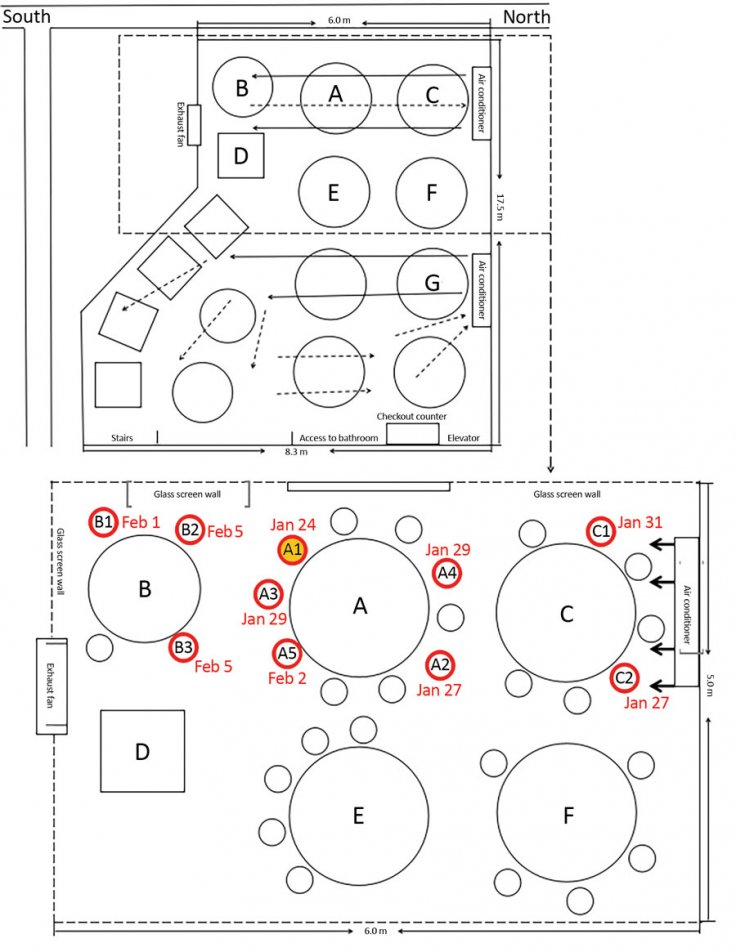Emergency Infectious Diseases, a journal produced by Centers of Disease Control and Prevention published a study that claims air condition was the reason behind spread of coronavirus infection from one person to nine others in a Chinese restaurant.
Researchers investigated an incident where COVID-19 disease affected 10 persons from three families who had lunch at the same restaurant in Guangzhou, China. On January 25, one of those families had just travelled from Wuhan and visited the restaurant for lunch the next day. Two other families also visited the same restaurant and had lunch at the neighbouring tables.
One of the family members who came from Wuhan went to the hospital later that day after experiencing cough and fever and found out to be diagnosed with coronavirus. Nine other members from all the three families also tested positive for coronavirus by February 5.
The restaurant was a five-story building with separate air condition on each floor. There was a distance of one metre between each table. However, 91 other persons who visited the third floor of the restaurant the same day didn't get down with the virus.
Droplets remain in the air for a shorter time and travel a shorter distance

Researchers say that heavy droplets can travel only a short distance and remain in the air for a short time. Therefore air condition is the potential route of droplet transmission that caused the outbreak. They concluded that strong airflow from the air-conditioner could have helped in transmission from one table to another.
They say that droplet transmission alone cannot explain the spread of the virus in the restaurant. "Our study has limitations. We did not conduct an experimental study simulating the airborne transmission route. We also did not perform serologic studies of swab sample–negative asymptomatic family members and other diners to estimate risk for infection," the study read.
This outbreak explains some of the challenges restaurants and enclosed places with the support of heavy air condition are going to face when restrictions ease. Researchers recommend that strengthening temperature-monitoring surveillance, increasing distance between tables, and improving ventilation are some of the measures restaurateurs should keep to curb the spread of the virus.










